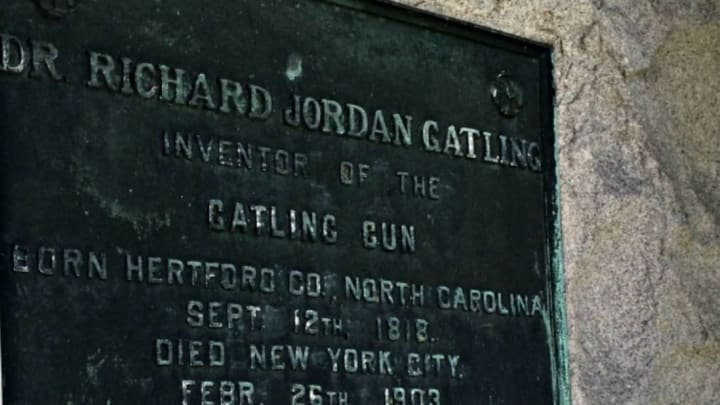Every time we so much as touch a toe out of state, cemeteries are on our travel itinerary—from garden-like expanses to overgrown boot hills, whether they’re the final resting places of the well-known but not that important or the important but not that well-known. After realizing that there are a lot of taphophiles out there, I’m putting my archive of interesting tombstones to good use.
Dr. Richard Gatling was very inventive. He held more than 50 patents, including a screw propeller for boats, a steam plow, and a wheat seed sower. What he’s best known for, however, is the deadly creation that bears his name: the Gatling gun. Though it killed an untold number of people, Gatling actually invented it with the hope that it would help save lives:
“It occurred to me that if I could invent a machine—a gun—which could by rapidity of fire, enable one man to do as much battle duty as a hundred, that it would, to a great extent, supersede the necessity of large armies, and, consequently, exposure to battle and disease be greatly diminished.”

Stacy Conradt
Because the first Gatling gun used a crank to fire off up to 200 rounds per minute, the weapon is considered a precursor to the truly automatic weapons that soon followed. In case you can’t picture that in your head, here’s a replica Gatling gun in action:
Gatling sold his gun patents to the Colt Patent Firearms Company in 1870, but kept his role as Gatling Gun Company president. He died at the age of 84 in 1903—after he had seen the decline of the Gatling gun as weapons that were truly automatic replaced it. He and Jemima, his “beloved and saintly wife” according to her epitaph, are buried at Crown Hill Cemetery in Indianapolis.

Stacy Conradt
Peruse all the entries in our Grave Sightings series here.
